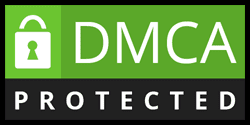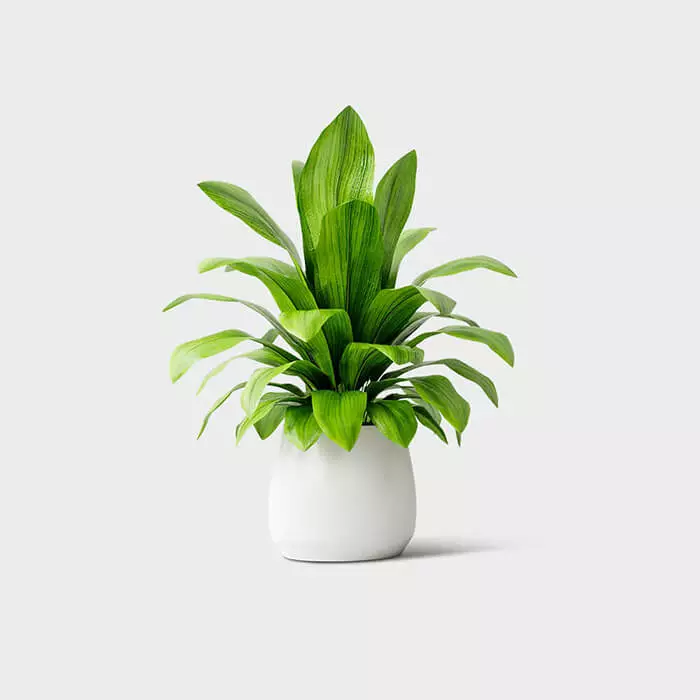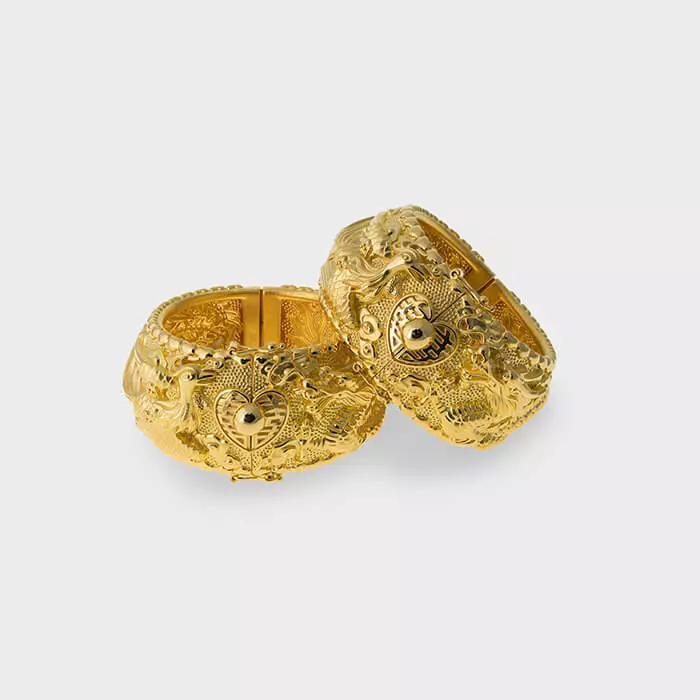To remove stretch marks in photoshop, you can use the healing brush tool and clone stamp tool. Simply select the area with the stretch marks and use the healing brush tool to sample nearby skin and brush over the marks.
You can also use the clone stamp tool to copy texture from one area and apply it to the marks. Remember to blend and adjust the opacity to make it look natural. Stretch marks can be a source of self-consciousness for many individuals, particularly for those who wish to enhance their appearance in photographs or images.
Fortunately, advances in digital image editing software such as adobe photoshop allow us to easily remove or reduce the visibility of stretch marks. We will explore effective techniques to remove stretch marks in photoshop, providing you with the confidence to present flawless skin in your photos. Whether you are a photographer, a model, or an individual looking to retouch personal images, learning how to remove stretch marks in photoshop can be a useful skill to possess. So let’s dive in and discover the step-by-step process to achieve smooth and blemish-free skin in your photos.
Understanding Stretch Marks
Learn how to remove stretch marks in photoshop with this informative guide. Discover expert tips and techniques to retouch and enhance your photos, leaving your subjects with flawless skin.
Stretch marks are a common skin condition that can affect people of all ages and genders. They often occur as a result of rapid growth or changes in body weight. Understanding what stretch marks are and why they occur can help you better manage and remove them.
In this section, we’ll explore the definition of stretch marks and the factors that contribute to their development.
What Are Stretch Marks And Why Do They Occur?
- Stretch marks, also known as striae, are visible lines or bands that appear on the skin’s surface.
- They are characterized by a different texture and color compared to the surrounding skin.
- Stretch marks commonly appear in areas of the body where the skin undergoes significant stretching, such as the abdomen, breasts, hips, thighs, and arms.
Factors that contribute to the development of stretch marks:
- Rapid growth: Stretch marks often occur during periods of rapid growth, such as puberty or pregnancy. The skin stretches beyond its normal capacity, causing the connective tissues to break and resulting in the formation of stretch marks.
- Weight fluctuations: Sudden weight gain or loss can lead to the development of stretch marks. When the body gains weight, the skin must stretch to accommodate the increased volume. Conversely, rapid weight loss can cause the skin to shrink, leaving behind stretch marks.
- Hormonal changes: Hormones play a significant role in the development of stretch marks. Changes in hormone levels, especially during puberty and pregnancy, can make the skin more prone to stretching and the formation of stretch marks.
- Genetics: Some individuals may have a genetic predisposition to developing stretch marks. If your close family members have experienced stretch marks, you may be more likely to develop them as well.
- Medications and medical conditions: Certain medications and medical conditions, such as corticosteroid use or marfan syndrome, can make the skin fragile and increase the risk of developing stretch marks.
Knowing the causes of stretch marks can help you prevent their occurrence or manage them effectively. In the following sections of this blog post, we will explore various techniques and strategies to remove stretch marks using photoshop, allowing you to enhance the appearance of your photographs effortlessly.
Preparing The Image In Photoshop
Learn how to remove stretch marks in photoshop by preparing the image with these simple yet effective techniques. Transform your photos effortlessly using photoshop’s tools for a flawless final result.
Stretch marks can often be a source of self-consciousness for many people, but with the magic of photoshop, you can easily remove them from your photos. In this blog post, we will walk you through the process of removing stretch marks in photoshop, starting with how to prepare the image for editing.
Opening The Image In Photoshop
To begin the process of removing stretch marks in photoshop, follow these steps:
- Launch photoshop and open the image you want to edit.
- Go to “file” in the menu bar and select “open” or simply press ctrl + o.
- Locate the image file on your computer and click “open” to import it into photoshop.
- Once the image is loaded, it will appear in the main editing workspace of photoshop.
Adjusting The Image’S Brightness And Contrast
Before you start removing stretch marks, it’s important to adjust the image’s brightness and contrast to ensure optimal editing conditions. Here’s how you can do it:
- In the menu bar, go to “image” and select “adjustments”.
- Choose “brightness/contrast” from the drop-down menu.
- A dialog box will appear, featuring sliders for adjusting both brightness and contrast.
- Move the sliders left or right to increase or decrease the brightness and contrast levels.
- Keep tweaking the settings until you’re satisfied with the image’s overall appearance.
Now that you’ve opened the image in photoshop and made necessary adjustments to its brightness and contrast, you’re ready to move on to the next steps in removing stretch marks. Stay tuned for our next blog post on precisely how to do that!
Using The Healing Brush Tool
Learn how to remove stretch marks in photoshop using the healing brush tool. This powerful tool allows you to seamlessly blend and retouch areas with stretch marks, leaving your photos flawless and blemish-free.
Selecting The Healing Brush Tool
To begin removing stretch marks in photoshop, you’ll first need to select the healing brush tool. This powerful tool allows you to seamlessly blend and heal areas of your image, making it ideal for eliminating those unwanted stretch marks. Here’s how to do it:
- Launch photoshop and open the image file you want to work on.
- Locate the healing brush tool in the toolbar on the left side of your workspace (it resembles a bandage).
- Click and hold on the spot healing brush tool icon until a dropdown menu appears, then select the healing brush tool from the options.
Adjusting The Brush Size And Hardness
Before you start applying the healing brush to the stretch marks, it’s important to adjust the brush size and hardness to achieve the desired effect. Here’s how:
- Ensure that the healing brush tool is still selected in the toolbar.
- At the top of the workspace, you’ll see the brush options. Click on the brush size dropdown menu to adjust the diameter of the brush. For small areas like stretch marks, a smaller brush size is generally recommended.
- To modify the hardness of the brush, use the hardness slider. A softer brush (lower percentage) will result in a more gradual blending, while a harder brush (higher percentage) will provide sharper edges.
Applying The Healing Brush To The Stretch Marks
Now that you have the healing brush tool and brush settings in place, it’s time to start removing those stretch marks from your image. Follow these steps to achieve smooth, flawless skin:
- Zoom in on the area of the image where the stretch marks are located. This will allow for more precise editing.
- Position the brush cursor over an area of skin near the stretch marks that you want to clone from—ideally, this area should have a similar texture and color.
- Press and hold the alt/option key on your keyboard to set the source point. Click once to establish the sampling point.
- Release the alt/option key and brush over the stretch marks with gentle strokes, making sure to stay close to the edges for a realistic result. As you brush, photoshop will sample from the source point you set and blend the stretch marks with the surrounding area.
- Repeat this process for each stretch mark until they have been effectively blended into the skin.
By utilizing the healing brush tool in photoshop, you can easily and effectively remove stretch marks from your images, resulting in a more polished and professional appearance. Remember to save your work, and don’t be afraid to experiment with different brush sizes and techniques to achieve the desired outcome.
Happy editing!
Using The Clone Stamp Tool
Learn how to remove stretch marks in photoshop using the clone stamp tool, an effective and efficient technique to erase imperfections from your images.
Selecting The Clone Stamp Tool
The clone stamp tool in photoshop is a powerful feature that can be used to remove stretch marks from photos. Here’s how you can use it effectively:
- Open the image in photoshop and select the clone stamp tool from the toolbar.
- Adjust the brush size to match the area you want to clone. Use the bracket keys ([ and ]) to increase or decrease the brush size.
- Choose a brush hardness that suits your needs. A softer brush can help blend the cloned area more naturally.
- Hold the alt key and click on an area of the skin that is free from stretch marks. This will define the source area that you want to clone from.
Sampling An Area To Clone From
Before you start cloning away the stretch marks, it’s important to sample an area of the skin that matches the texture and color you want to replicate. Here’s how you do it:
- Zoom in to get a closer look at the stretch marks.
- Press and hold the alt key, then click on a nearby area of the skin that has a similar texture and color to the area you want to correct.
- Release the alt key and move the cursor over the stretch marks. You’ll notice that the cursor now shows a preview of the sampled area.
Applying The Clone Stamp To The Stretch Marks
Now that you have selected the clone stamp tool and sampled an area, it’s time to start removing the stretch marks. Follow these steps:
- Click and drag over the stretch marks using short strokes. Make sure to avoid repetitive patterns to maintain a natural look.
- As you clone, periodically release the mouse button to resample another area. This helps blend the cloned pixels more seamlessly with the surrounding skin.
- Adjust the brush size and hardness as needed, especially when working on different areas of the image.
- Zoom out occasionally to get a better view of the overall progress and make any necessary adjustments.
Remember, patience and precision are key when using the clone stamp tool. Take your time to achieve the desired results and practice on a duplicate layer if you’re unsure about the outcome. Happy editing!
Using The Patch Tool
Remove stretch marks in photoshop with the patch tool. This powerful feature allows you to select and repair areas of the skin, creating a smooth and flawless result.
Selecting The Patch Tool
The patch tool is a powerful feature in photoshop that can help you remove stretch marks with precision and ease. Here’s how to use it effectively:
- Open your image in photoshop and select the patch tool from the toolbar.
- Ensure that the “source” option is chosen in the top menu.
- Zoom in to the area containing the stretch marks for better accuracy.
Creating A Selection Around The Stretch Marks
To remove stretch marks using the patch tool, begin by creating a selection around the affected area:
- Click and drag the patch tool cursor around the stretch marks, ensuring that the selection encompasses the entire length and width of each mark.
- It’s important to be precise with your selection to achieve optimal results.
Dragging The Selection To A Clean Area Of The Skin
Once you have selected the stretch marks, it’s time to remove them by dragging the selection to a clean area of the skin:
- Position your cursor within the selected area, click, and drag it to an adjacent clean area that matches the color and texture of the surrounding skin.
- Release the mouse button once the selection is in the desired location.
Remember to follow these tips for a seamless outcome:
- Choose a destination area that seamlessly blends with the surrounding skin tone.
- Adjust the size of the selection if necessary to ensure a harmonious match.
- Repeat the process for all the stretch marks you want to remove.
And voila! The patch tool in photoshop allows you to easily remove stretch marks, leaving your skin looking flawless and blemish-free. With a little practice, you’ll master this technique and be able to enhance your photos effortlessly.
So go ahead and give it a try! Your photos will thank you for it.
Enhancing The Skin Texture
Discover how to effortlessly remove stretch marks in photoshop and enhance the skin texture. Get expert tips and tricks for a flawless and natural-looking result.
When it comes to removing stretch marks in photoshop, one essential aspect is enhancing the skin texture. By focusing on refining the skin’s appearance, you can achieve a more natural result. In this section, we will explore two useful techniques: using the smudge tool and applying the spot healing brush for touch-ups.
Let’s dive in!
Using The Smudge Tool To Blend The Edited Areas:
- Start by selecting the smudge tool from the tool panel.
- Adjust the brush size according to the area you want to work on.
- Gently stroke the edited areas in the direction of the surrounding skin texture to blend them seamlessly.
- Use short strokes and avoid going overboard to maintain a realistic look.
- Experiment with different brush sizes and strength levels to achieve the desired outcome.
Applying The Spot Healing Brush For Additional Touch-Ups:
- Locate the spot healing brush tool from the toolbar.
- Adjust the brush size to fit the area you want to retouch.
- Click on the stretch marks or blemishes you want to remove, and the tool will automatically clone nearby pixels to cover them.
- For better results, zoom in and work on small areas at a time.
- Repeat the process until you are satisfied with the overall appearance of the skin.
By utilizing the smudge tool to blend the edited areas and the spot healing brush for touch-ups, you can significantly improve the skin texture in your photoshop composition. These techniques allow you to achieve a more flawless and natural final result.
Experiment with different settings and brush sizes to find what works best for your specific project. Remember, practice makes perfect, so don’t hesitate to try out these techniques on your own!
Finalizing The Image
Remove stretch marks effortlessly using photoshop’s powerful image-editing tools. Achieve flawless skin by learning how to effectively erase these imperfections through simple steps and techniques.
Adjusting The Overall Image Tone And Color
Once you have made all the necessary adjustments to remove stretch marks in photoshop, it’s time to focus on finalizing the image. This involves fine-tuning the overall tone and color to create a polished, professional look. With a few simple adjustments, you can enhance the image and make it ready for the desired audience.
Here are some steps to follow:
- Brightness and contrast: Adjust the brightness and contrast levels to enhance the overall image. Increase the brightness to make the image look livelier and bring out the details. Fine-tune the contrast to ensure a good balance between the light and dark areas of the photo.
- Levels and curves: Utilize the levels and curves adjustment tools to refine the tonal range of the image. By adjusting the black, gray, and white points, you can enhance the overall tonality and contrast. Experiment with the curves to achieve the desired effect.
- Hue and saturation: Fine-tune the hues and saturation levels to ensure accurate and vibrant colors. Adjust the hue to modify the overall color cast of the image, and increase the saturation to make the colors more vivid. Be careful not to overdo it and make the image look unnatural.
- Color balance: Use the color balance adjustment tool to achieve the desired color temperature for your image. Adjust the color balance by fine-tuning the levels of cyan, magenta, yellow, red, green, and blue in the shadows, midtones, and highlights. This will help you create a color balance that suits the image and your intended aesthetic.
- Selective color: If necessary, use the selective color adjustment tool to make targeted adjustments to specific colors in the image. This is useful when you want to correct any color casts or balance out certain elements.
Saving The Edited Image In Desired Format
Once you are satisfied with the final adjustments and the overall look of the image, it’s time to save it in a desired format. Here are the steps to follow:
- Choose the appropriate file format based on your requirements. If you intend to use the image for web purposes, consider saving it in a compressed format such as jpeg or png to optimize file size without compromising quality. If you need a high-quality image for print, save it as a tiff or psd file.
- Before saving, ensure that the image dimensions are suitable for its intended use. If you need to resize the image, do so before saving to avoid any loss in quality.
- Specify the desired file name and location to save the image. Choose a descriptive name that represents the content of the image, making it easier to identify later.
- Consider adding metadata such as copyright information, keywords, and a brief description to help with image organization and discoverability.
- Finally, click on the “save” button and choose the appropriate settings for your chosen file format. You may have options for compression levels, color profiles, and other settings depending on the format selected. Ensure that your chosen settings align with your intended use for the image.
By following these steps, you can successfully finalize your edited image, adjusting the overall tone and color to create a visually appealing result. Save it in the desired format, making it ready for use in your intended projects.
Frequently Asked Questions For How To Remove Stretch Marks In Photoshop
Can Stretch Marks Be Removed Completely In Photoshop?
Yes, photoshop can effectively remove stretch marks by using the healing brush tool or content-aware fill.
Is It Possible To Remove Stretch Marks Using Photoshop Tutorials?
Yes, photoshop tutorials provide step-by-step guidance on how to remove stretch marks and achieve a smooth skin appearance.
Are There Any Specific Photoshop Techniques For Removing Stretch Marks?
Yes, techniques like frequency separation, clone stamp tool, and patch tool can be used to specifically target and remove stretch marks in photoshop.
Can Photoshop Remove Stretch Marks Without Leaving Any Traces?
Yes, with proper techniques and editing skills, photoshop can remove stretch marks seamlessly, leaving no traces behind.
Are There Any Alternative Methods To Remove Stretch Marks Other Than Photoshop?
Yes, apart from photoshop, options like laser treatments, creams, and natural remedies can also help reduce the appearance of stretch marks.
Conclusion
Photoshop offers a convenient and effective solution for removing stretch marks from images. By utilizing various tools such as the healing brush and clone stamp, users can seamlessly erase those unwanted blemishes. Additionally, adjusting the levels and colors can help blend the edited area with the surrounding skin tone, resulting in a natural-looking image.
Remember to use a light touch and take your time to achieve the best results. Whether you’re retouching personal photos or working on professional projects, mastering the art of removing stretch marks in photoshop can enhance the overall appearance and boost your confidence in your photos.
So, give it a try and discover the power of photoshop in improving the visual appeal of your images. Get ready to say goodbye to those stretch marks and hello to flawless photos!












